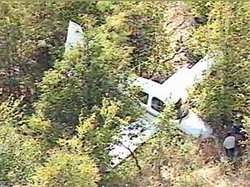jrh
Well-Known Member
1. I have a student (25 TT) who is set on buying a Cirrus to complete his private and instrument training. Any tips from those who fly these things?
What does your student ultimately want to do with flying? Has he test flown anything else?
The reason I ask this is because a lot of guys with 25 TT get sold on a Cirrus without a true understanding of what they need in a plane. I have nothing against Cirrus, I actually think they're good planes. However, I wouldn't recommend them as a first aircraft for a pilot any more than I'd recommend a new Mooney or Bonanza.
In my opinion, a new C-182 or 206 is a better fit for a low time pilot with the same amount of money. I'd encourage him to at least take a demo flight in one of the new Cessnas before committing to a Cirrus, to have a benchmark to compare the Cirrus to. He might be unimpressed by whatever aircraft he's currently training in (is it an older Cessna or Cherokee?), but a glass-paneled turbo 182 is a very capable machine compared to the trainer he's used to.
Anyway, if he insists on a Cirrus, the biggest difference you'll notice is how "slippery" it is. Very low drag. Therefore you'll need to plan descents and approaches to landing accordingly. Chopping the power and throwing out flaps in a Cirrus will not salvage a high/fast approach the way it will in typical trainers.
Also, the landing picture is different. The Cirrus lands much faster and "flatter" than typical trainers. You, as an instructor, might want to spend an hour or two doing takeoffs and landings with an experienced Cirrus pilot to get the feel for this.
The last piece of advice is to teach to a deeper level than you might otherwise teach somebody in a 172. Everything from checklists to decision making skills become more critical when flying the Cirrus. It goes significantly faster and leaves less margin for error. A good pilot can handle it fine, but it's sort of like landing a tailwheel aircraft--if you have good technique, landing a tailwheel and tricycle gear aircraft is the same. However, a tailwheel aircraft is much less forgiving of mistakes. Same with the Cirrus. Do everything right and it's a great aircraft. Start making mistakes and things will snowball faster than they would if you were in a 172.


